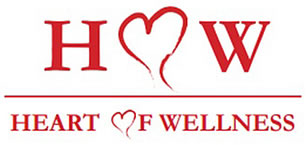Written by Pat Clark
Throughout human existence on Earth our predecessors covered great distances on foot to sustain life. It was not uncommon for members of primitive societies to walk or run 6-12 miles per day, tracking protein-rich animals and gathering nutritious plant life. Before farming began about 10, 000 years ago, the work necessary to feed a family kept our ancestors on foot and on the move all day long. The onset of farming and the domestication of animals created a convenient proximity to calories, which lead to a decrease in weekly mileage on foot. This was the first of many inventions supporting the development of stationary communities and stationery soon became sedentary.
In our modern Door dash and Amazon world we can hardly comprehend the full-time job of basic survival during most of the human experience thus far. Since we no longer need to move through a grassland to capture and dress dinner, nor head out into the bush to gather vegetation to keep us healthy, we must remember that human health once depended on long distance foot travel. Indeed, we humans are made to move. And move we must in order to stay well.
During my years as an amateur marathoner, I often ran by folks walking along the beach or a bike path and wondered why they did not pick-up the pace. Surely, running is much better for you than walking, and the faster the pace the better, right? After a recent health scare and surgery left this runner and cyclist without access to those activities, I did the unthinkable. I started walking.
Walking 30 minutes per day is the single greatest health restoration and maintenance activity to make habit. As has been well documented, half of us gained 10 or more unwanted pounds during the COVID19 shutdown. Stress eating, alcohol consumption and sedentary lifestyles all on the rise. Walking helps manage blood pressure, weight, and our valuable free time. With American obesity and diabetes rates some of the highest in the first world, walking our way to health and healing in this country is not a stretch. The importance of heart health cannot be overstated, and walking is a fabulously low impact cardiovascular activity. The HOW (Heart of Wellness) Program teaches that walking is a great foundation for a healthy and happy lifestyle, and with very little investment. Save the thousands you might spend on that Peloton or fancy road bike, find those old sneaks in the back of the closet, and start with an evening walk around your neighborhood. Walking your way to physical health starts with the first short journey.
Mental health, stress management, mood and perspective are greatly improved through exercise, and walking is no exception. Cheaper and healthier than wine, chocolate, vape or Netflix, walking provides a mental and emotional release of the day. The challenges you struggled to inventory and process earlier in the day seem to diminish and solutions flow to the mind. Keep a small notebook handy when walking and jot the big or little important ideas that emerge. Walking has proven to be an effective substitute for medication for a variety of what ails us, including anxiety, mood swings and stress. Runners High is an endorphin-induced euphoric state once believed to result from only the intensity of running. Studies now show that walking also activates Happy Hormones and positively impacts disposition. Your children and spouse will appreciate you walking the grumpiness of the day away before supper.
As humans we are wired to explore, to push beyond the familiar, to see what is out there. This need not be complex and as nearby as that conservation land you pass near your home, that you never took the time to explore. Public-private partnerships and generous residents have preserved volumes of natural lands in Barnstable just waiting to be explored on foot. Hathaway Pond in Hyannis, Eagle Pond in Cotuit and the West Barnstable Conservation Lands provide beautiful water views, scenic overlooks and cartways of yesteryear. A half an hour or half a day in nature is restorative, healing, and peaceful, resulting in the moving body and still mind that always wins the day. During COVID-19 shutdown increasing numbers took to the trails with friends and family, together while socially distant, breathing the fresh air, seeing local wildlife, and appreciating this beautiful place we call home slowly, on foot, with no particular pace in mind.
Yes you can walk your way to health and happiness. It starts by moving 30 minutes a day around your neighborhood, around a track or around a local pond. Ask a family member or friend to join you and hold each other accountable for your walking dates. Find new places for short exploratory excursions and while learning about the beauty of the outdoors, you will learn a great deal more about yourself.
I would love to hear from you about your walking accomplishments or challenges. Email me at [email protected] Be well my friends. See you on the roads and trails.
Pat Clark assists with events and programs at HOW of Centerville, a nonprofit that specializes in health and happiness programs that are inspirational and informational for business, communities, and schools.
The content shared by HOW is for informational purposes only and is not intended nor should it be used to diagnose or treat any medical conditions.
